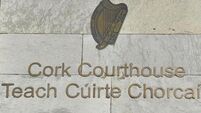Hidden art of reading weather

Long before Jean Byrne and others from Met Éireann appeared nightly on our TV screens, every townland had a man reputed to be good at reading the weather. If there was hay to be mown, or saved, such a man would be consulted and his views given due weight.
The wet and windy weather which has marred July has been forecast prettily accurately, in the south-west at least. There’s no doubt that forecasting has improved with the use of satellites and other technology.
On average, we’re told, a five-day forecast of today is as reliable as a two-day forecast 20 years ago. Forecasting for more than a week ahead continues to be difficult.
Accuracy falls significantly beyond about 10 days. But, techniques have improved and there have been technological advances in predicting the weather in recent times. But, despite such progress, many challenges remain regarding long-term, weather predictability.
And, it would be foolish to dismiss all the old weather lore and wisdom as poppycock or superstition. One belief that comes to mind is that if swallows are flying low, it is a sign of rain. This is an international belief and, from personal observation this summer, it seems true. Swallows are able to catch insects at high levels in fine weather, but when the air is humid just before rain insects stay near the ground, so swallows must swoop low to devour them.
Retired UCC academic Patrick Cronin is a student of weather lore, among other things, and has drawn comparisons between beliefs in Ireland, England and Greece, for instance. He grew up in view of the Paps Mountains, on the Cork/Kerry border, and often heard it said that when the Paps appeared nearer than they really were, rain was coming.
This exceptionally clear view resulted from the approach of a warm front which caused air with low water vapour to sink towards the earth from a high level. “Having originated at a very high altitude, this air is largely free from the dust particles that normally reduce the transparency of the air. Extreme visibility is almost invariably a sign that rain could occur within six or seven hours,’’ wrote Dr Cronin in the Sliabh Luachra Journal, many years ago.
He also agreed with the ancient belief that clouds resembling fleeces were trusted guarantors of continued fine weather and “rarely disappointed’’. Let’s hope August will bring some of those fleeces.













